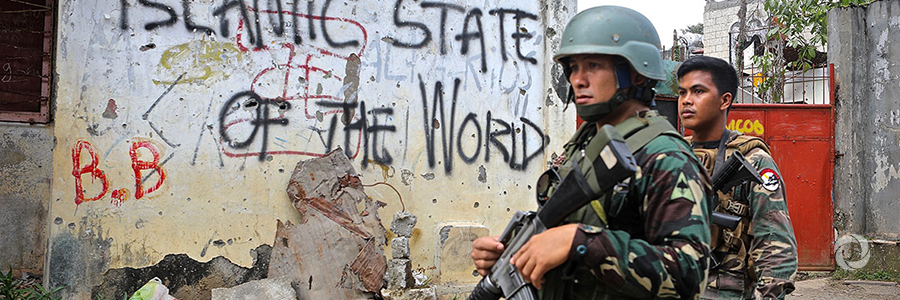Despite serious military setbacks, the Islamic State of Iraq and the Levant (ISIL/Da’esh) may still have around 20,000 fighters and is continuing its dangerous transformation into a covert global network, while focusing on the activities of its regional offshoots, the United Nations Security Council was told.
These were among the key findings in a new United Nations report into the threats posed by ISIL presented to the UN Security Council last week by senior UN counter-terrorism officials.
The report also detailed how UN Member States and the UN system are continuing to strengthen, refine and promote the effective use of tools and measures to address the evolving transnational threat posed by the terrorist group and its affiliates
Briefing the Council, Vladimir Voronkov, Under-Secretary-General of the UN Office of Counter-Terrorism, said that despite being militarily defeated in Iraq and in headlong retreat in Syria, Islamic State of Iraq and the Levant, otherwise known as ISIL, remains a serious and significant concern.
Mr. Voronkov was joined by Michèle Coninsx, Executive Director of the UN Counter-Terrorism Committee Executive Directorate (CTED). The two senior officials broke the report down into three main areas, assuring the Council members that: “The global fight against ISIL and its affiliates continues.”
Firstly, Mr. Voronkov said that despite a major loss of territory, there are still around 20,000 ISIL members in both Iraq and Syria, and a core of fighters is expected to survive, thanks to ongoing conflict and instability. A significant number of ISIL-affiliated militants also exist in Afghanistan, South-East Asia, West Africa and Libya, and to a lesser extent in Sinai, Yemen, Somalia and the Sahel.

ISIL continues to exert a presence and influence across a wide spectrum of countries and regions: Indonesia was hit by a series of deadly suicide bombings in May, whilst in Europe, there is concern over commercially encrypted messages and radicalization in prisons.
The terror group is even attempting to expand its presence in Afghanistan: Mr. Voronkov revealed that during his mission to Kabul, the Afghan capital, on August 14 and 15, President Ashraf Ghani proposed a high-level conference in Kabul next year, with the support of partners, to develop a regional counter-terrorism strategy with a focus on Afghanistan.
Secondly, whilst the flow of foreign ISIL fighters returning home is slower than feared, the dangers posed by bomb-making expertise gained in conflict zones (such as the preparation of improvised explosive devices and weaponized drones) is a major cause for concern.
Former fighters back in their home countries have the potential to radicalize others, whether in the prison system or wider society, and Member States continue to experience difficulties in assessing the risks they pose, and must develop tailored strategies for their returning and relocation.
And third, the evolution of ISIL (from a proto-State structure into a covert network) has driven the group’s finances underground, making them much harder to detect: it still has the capacity to channel funds across borders, often via intermediate countries, to their final destination.
Referring to the report, Mr. Voronkov noted that Member States and the international community must renew their efforts to counter the evolving, global threat from ISIL.
Within the UN, several entities are working closely together to counter the group, addressing such critical areas as financing of terrorism, international judicial cooperation, prosecution, rehabilitation, and reintegration.
Ms. Coninsx added that the UN is supporting Member States with the most up-to-date technologies to secure their borders, providing guidance for the effective use of these technologies in full compliance with international human rights law.
“We also continue to forge new and innovative partnerships with the private sector, including in particular in the area of information and communications technologies,” she said, stressing that such engagement is essential, for example, with respect to gathering digital evidence in terrorism cases.
Original source: UN News
Published on 23 August 2018

